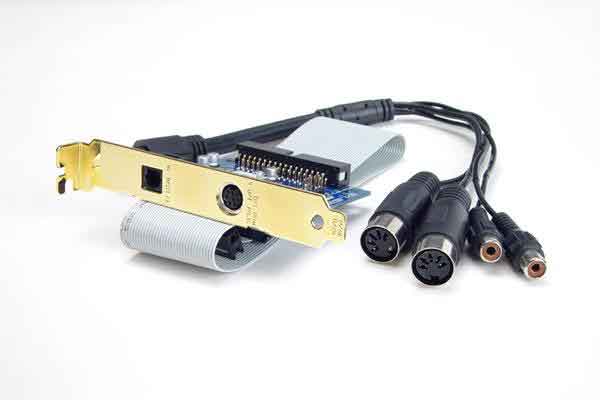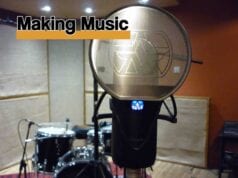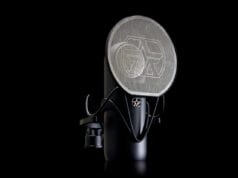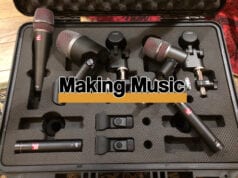Last Updated on October 8, 2016 by Andrew Culture
Is a high-quality, low cost digital audio card a possibility? We fight it out with our Ego…
Information

Products: Waveterminal 192L and MI/ODI/O
Manufacturer: Egosys
Prices: 192L $269 £149.99
MI/ODI/O $89 £49.99
Web: www.esi-audio.com
With a name like Ego you might expect the company to be one of many in the West but it’s not; it’s Korean, our friends in the South.
The Waveterminal 192L is one of three PCI Waveterminal cards designed for musicians wanting to move beyond 16-bit/44.1kHz recording. It supports 24-bit/192kHz digital audio playback (24-bit 96kHz recording) and features a stereo analogue In, a mono Mic In complete with +12V preamp, six Outs in the form of three stereo pairs, and a digital optical Out.
Installation is straightforward although Windows’ New Hardware Wizard struts its stuff for every port on the card which seems a little excessive. It also installs the MIDI drivers by default although you need the optional MI/ODI/O card in order to use MIDI. In use with Cubase, for example, the MIDI drivers took over the system and wouldn’t allow the existing MIDI port to be used! The solution was to disable the Waveterminal MIDI driver in the Device Manager and then reboot.
Console control


A software Console is installed during installation and appears as an icon in the system tray. From here you control most of the card’s functions. You can set the sample rate or let the card set the rate automatically according the audio file’s sample rate. There are switches for the digital connections although some of these require the MI/ODI/O add-on.
One of the analogue Ins is for a Mic but you cannot use this and the other analogue In at the same time. A switch on the Console makes the choice. When using a Mic you can select phantom powering and adjust the input level. This allows you to use both condenser and dynamic Mics.
Hard monitoring
One of the problems with many audio cards is that latency adds a delay to monitoring, particularly if you monitor through a software application such as a sequencer. The 192L supports hardware monitoring which routes the input directly to the output, bypassing any software latency problems.
On the right are faders for adjusting output levels and a useful feature here is the ability to control them with the mouse wheel.
You can also set the latency although it’s in samples rather than milliseconds. The actual latency you’ll achieve will vary according to the application and your computer system. However, the 192L supports hardware monitoring which should avoid many common monitoring problems. In monitor
Go direct


Supported drivers include MME (for WinAmp, WaveLab and Cakewalk), Multi-MME (for Sonar, PowerDVD and Win DVD), ASIO (for Cubase, Logic, Nuendo and Reason), GSIF (for GigaStudio). In many cases you could simply export audio from an app and import it into another program but where this is not possible, DirectWire offers a solution.
Hey – let’s call it a…


It connects to the Waveterminal card with a ribbon cable. The optical input is on the card’s backplane while the S/PDIF I/O and MIDI I/O hang off the end of a short connection cable. There are no extra drivers to install – the 1902L having done all that – so installation is simply a matter of plugging it in.
If you need an optical In then one might be tempted to ask why not buy a card so-equipped in the first place. Like-wise with S/PDIF. MIDI is a different kettle of coconuts because many quality audio cards, unlike consumer cards, do not include a MIDI interface. If you only need one MIDI I/O, there is a certain amount of sense in having it linked to the audio card. However, it is only one I/O. It might be enough for many folk, particularly if they’re computer-based, but if you have a couple of sound modules or more than one MIDI input, one I/O may not be enough. Something to consider. But then at the price it’s a good value add-on.
Check the specs of the 192L and you might expect a dynamic range slightly better than 100dB and 104dB, but there’s more to audio quality than a few benchmarks and the card sounds excellent. As a cost-effective move up to 24-bit recording, the system is very attractive.
Pros
Good quality audio
Mic input with phantom power
Phantom power on/off
Software control panel
Low-cost expansion option to S/PDIF I/O and MIDI I/O
Cons
Can’t use Mic and analogue In at the same time
Limited number of audio Ins
Tos-Link digital out doesn’t support 192kHz
MIDI & S/PDIF I/O extra
MI/ODI/O has only one MIDI I/O
Summary
A well-priced, good quality audio card with an expansion option; ideal if your I/O requirements are not overly ambitious.
7/10
Minimum system requirements
PC: Pentium III CPU or equivalent, Motherboard with Intel/VIA chipset, 128Mb RAM, PCI slot, Windows 98se/Me/2000/XP
Features
24-bit/96kHz ADC 100dB dynamic range
24-bit/192kHz DAC 104dB dynamic range
2 x analogue In
6 x analogue Out
24-bit/96kHz optical stereo digital Out
Mic preamp with +12V phantom power
DirectWire
Headphone out

















